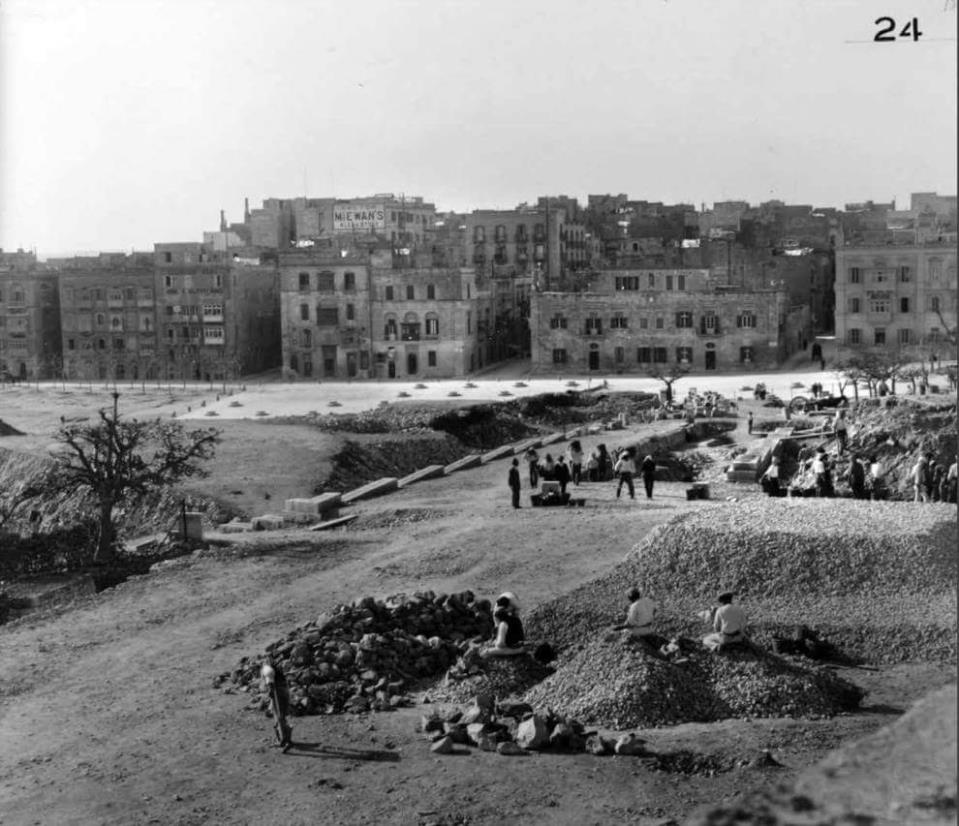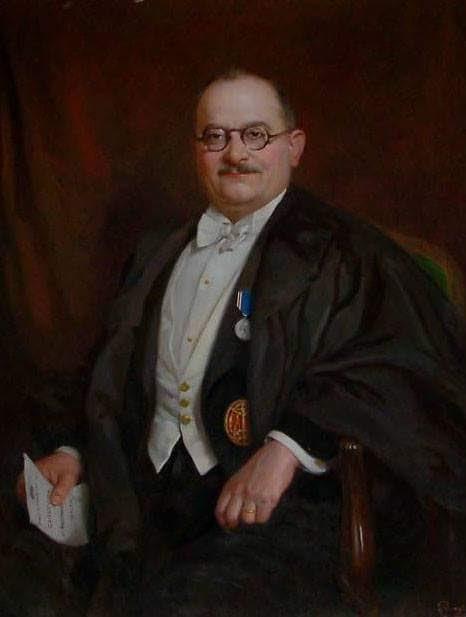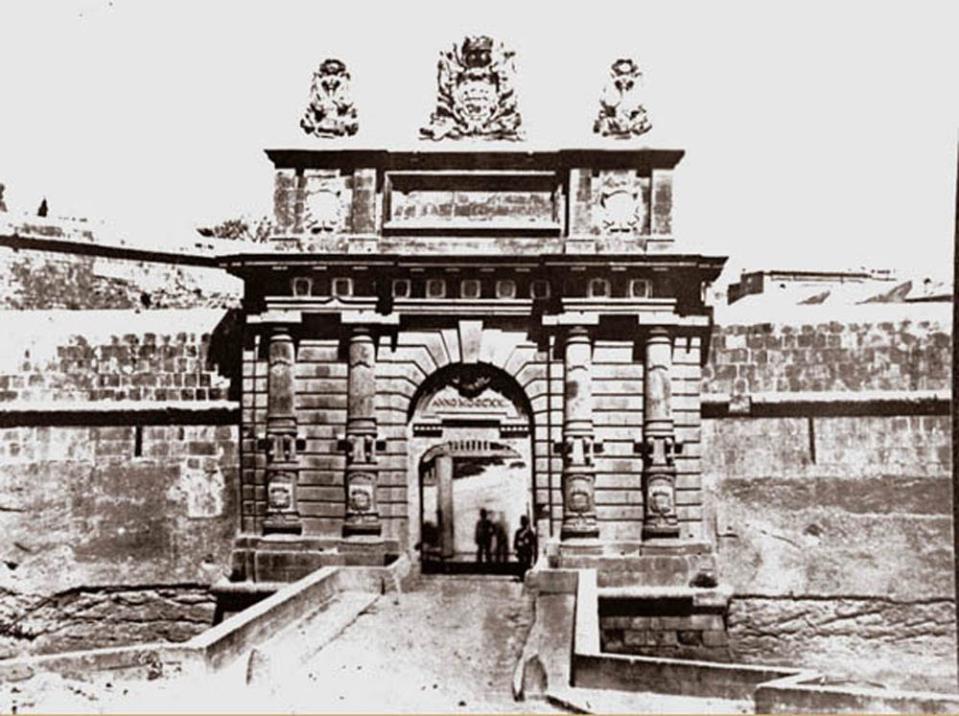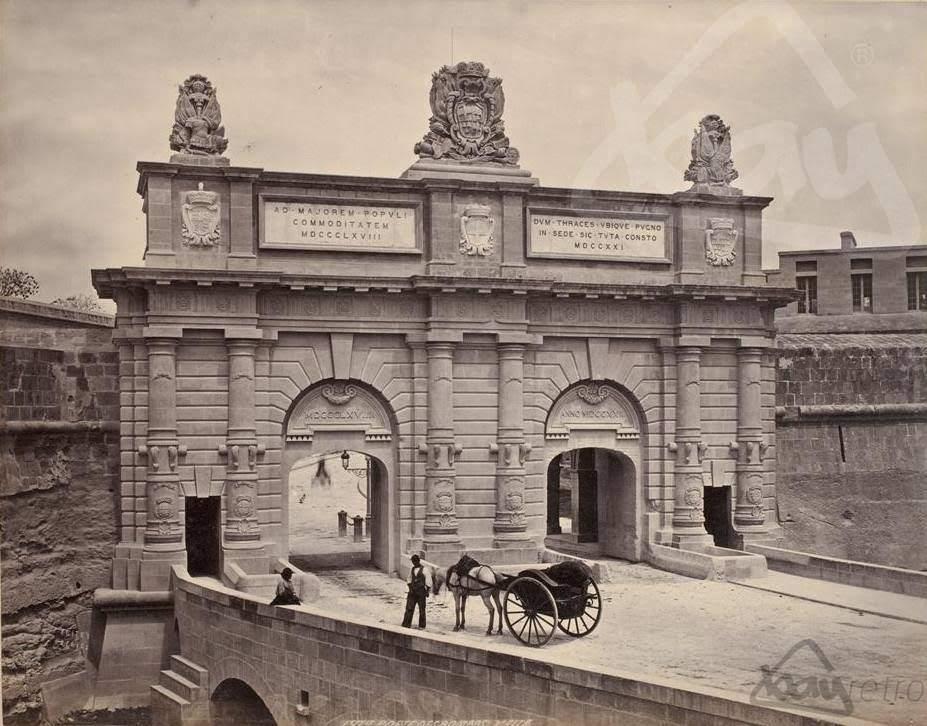Floriana was not built as the garden for Valletta as was claimed in a particular opinion article. In fact, following the foundation of Valletta just after the Great Siege, the area known as Floriana was barren land.
I am writing with reference to the article that was written by Kristina Chetcuti on the Sunday Times of Malta on 24th January 2021, entitled ‘’Floriana’s Champs-Élysées '’. Whilst placing all the political arguments aside, I wish to correct the gross historical inaccuracies and the disrespectful tone used to describe our beloved city and its’ valiant residents.
Following the Siege, the Knights wanted to build a fortified city, Valletta, which was the best in terms of the military engineering of the day. Despite the fact that the bastion walls of Valletta were extremely strong, the Knights never seemed to be able to put their mind at rest and wanted to continuously strengthen and improve the fortifications of the new city.
In the early 1700s, following years of discussions, Grandmaster Perellos embarked on the construction of the Floriana Lines. These fortifications designed by the Italian Military Engineer Pietro Paolo Floriani were to create a double buffer line of fortifications, in addition to the already existing bastions of Valletta. Basically, a Glacis was created: an empty space between the Valletta walls and the Floriana Lines, the entry through which was Portes des Bombes. Had the enemy tried to attack Valletta by land, it would have had to first make its way through the Floriana Lines. Though these fortifications were very strong, there was an additional in-built safety feature: the glacis. In fact, if the enemy actually managed to make its way through the Floriana Lines, the Knights would have been able to round them up in this big yard, closing down on them and preventing them from attacking attack Valletta. The glacis practically was to act as a trap, where the enemy is helplessly rounded up and attacked from all sides.

St Anne’s Gate which used to stand where the niche of St Anne is today.
The glacis had to be barren: no trees and buildings were allowed in order to ensure that visibility from the bastions of Valletta was unobstructed and any enemy intrusion was detected immediately. Once Valletta started becoming over-populated, there were discussions to build some buildings in the glacis of Floriana. There were lots of arguments for and against. Additional buildings in order to solve the over-population problem were necessary. However, these were going to destroy the effectiveness of the glacis.

Sir Filippo Sciberras: the father of the first Constitution granted to the Maltese in 1921
On the 9th of May 1724, Grandmaster Vilhena officially gave permission for the building of the city of Floriana. Up till that date there only existed the Wignacourt Water Tower, the Mall Gardens, Sarria Church and the Capuchins Convent. Though the building permission was granted, certain conditions had to be respected. Buildings in Floriana could not exceed one storey in height. Streets had to be in grid-form in order to be able to detect enemy intrusions and make it difficult for the enemy to hide amongst the buildings in winding streets. Also, a smaller glacis had to be left unbuilt. The last row of buildings permitted in Floriana, facing the Valletta bastions, was not to exceed the present site of the Floriana Church, all the way laterally across the city from Marsamxett to the Grand Harbour. That is why there are vast unbuilt spaces between Floriana and Valletta to the present day, such as the granaries and the Independence Arena. Other spaces were also previously vacant and were built by up the British, such as the barracks which now houses government departments. Further developments closer to Valletta, such as the Catholic Institute were also built on the glacis after the war. This, due to the fact that the authorities of the day felt that there was no further military use for this glacis.

The Glacis: the vacant site on the left is today occupied by Sir Paul Boffa Hospital
It is interesting to note that despite its’ rich history, to Ms Chetcuti, ‘’Floriana does not exist for anyone’’.... Really? I’m sure Ms. Chetcuti would be astonished to discover that Malta is what it is today thanks to Floriana. Personalities such as Sir Filippo Sciberras who gave us the first constitution, Prof. Sir Luigi Preziosi who invented the Preziosi Operation which was practiced worldwide, Bishop Mauro Caruana, the composer of our National Anthem Robert Samut, Dr. Herbert Ganado, Profs. Henry Frendo and the late Prof. Oliver Friggieri were all from Floriana. These individuals, together with an endless list of other personalities, shaped the fibre of Maltese society. Coincidentally, even Mgr. Mikiel Azzopardi, the founder of Dar tal-Providenza lived in Floriana, precisely in one of the ‘’hideous block of flats’’ overlooking St. Anne Street Ms. Chetcuti referred to in her article.

Sir Luigi Preziosi who discovered an important operation for the treatment of glaucoma
What about the events held in the massive spaces in Floriana? Popes, Kings, Queens, Heads of States, the 1913 International Eucharistic Congress, Concerts and Political Party events: all these visits and events were hosted in Floriana. What about the granting of our independence which happened in Floriana, the countless gardens, the majestic harbour views, the endless list of monuments and historical buildings that grace our streets? Is this the respect that Floriana deserves in return for all that it has offered to Maltese Society?

Porte des Bombes as originally built with one archway built in 1721
Without going into the polarised political arguments expressed in the said article, I definitely approve of the proposed project, to the extent that I would like it to be extended. The underground tunnel for the passage of vehicles, in my opinion, should start from outside Portes des Bombes. This would enable the rebuilding of the bastions flanking Portes des Bombes that were demolished by the British. Should this proposal be put in practice, on entering Floriana, one would be able to see Portes des Bombes attached to the bastions from both sides, as it was originally. One would then find the large Floriana garden leading into Valletta. All the traffic would go underground. We would hence not only be restoring greenery to our city and improving air quality, but at the same time we will also restore our heritage to its original glory.

Porte des bombes with two arches, enlarged in 1868
I am proud to be from Floriana. Ms Chetcuti might also be interested to note that I am also proud to have been brought up in one of those hideous Mintoff Flats. Those flats are massive, with a floor area of over 160 square metres, and rooms measuring 36 square metres each. Though in principle I disagree with the classist and prejudiced tone of Ms Chetcuti, I will use her own language so that she could understand my last point better. The ‘’tal-Pepe’’ people of Sliema, in their seafront pigeon-hole apartments which cost millions, and the people living in the winding roads in provincial Ħal-Lija, would only dream of having the comfortable and happy lives we had in those ‘’hideous Floriana flats’’! It is obviously difficult to compare a Ħal-Lija lane to the widest street in Malta: St Anne’s Street. Such lanes would be more comparable to the corridor in our hideous Floriana flat. Most probably, the latter would be wider.

Historical wrought iron greenhouse in Argotti Gardens
Until the very end of the article, Ms Chetcuti got her history facts wrong. Portes de Bombes was originally built as a one-arched doorway into the bastions, topped with a coat of arms with a set of Pears: the coat of arms of Grandmaster Perellos. It was the British who decided to add the second entrance on the left in the 1868: Ad Majorem Populi Commoditatem – to make it more comfortable for the traffic to flow through.
Hopefully with this project, at last Floriana will be given the attention and respect it merits. I also hope that people would start doing some research prior to writing, whether in the papers, in the media or on social media. It is unfair to the readers when one propagates inaccurate information.

Stephen M. Camilleri
CPA(pc), FIA, B.Com, B.Accty (Hons), PGCE, MA
Floriana